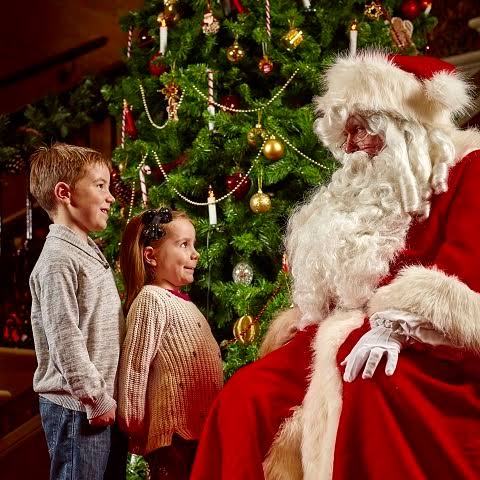10 popular Christmas traditions and their origins

Christmas is a time of joy and celebration, filled with numerous traditions that bring families and communities together. Many of these beloved customs have deep historical and cultural roots that have evolved over centuries. In this article, we will explore the origins of 10 popular Christmas traditions, shedding light on their rich histories and symbolism.
Christmas trees
Originating from ancient pagan beliefs, the tradition of decorating evergreen trees during midwinter emerged in Germany during the 16th century. It symbolized the hope of new life amidst the cold season and later became an integral part of Christmas celebrations worldwide.
Santa claus
The jolly figure of Santa Claus has its roots in St. Nicholas, a 4th-century bishop from modern-day Turkey known for his generosity. Over the years, his character evolved, drawing inspiration from various folktales and traditions to become the beloved bringer of gifts we know today.
Mistletoe
Mistletoe, considered a symbol of fertility and friendship, has its origins in Celtic and Norse cultures. It was believed to bring good fortune and used to celebrate the winter solstice. The tradition of kissing under mistletoe began in England during the 18th century.
Advent calendar
Originating in 19th-century Germany, Advent calendars were used to count down the days leading up to Christmas. They initially consisted of chalk marks on doors but evolved into decorative calendars with small doors hiding treats or religious symbols.
Christmas carols
The tradition of singing carols during Christmas originated in medieval Europe. Carols, meaning joyful songs, were initially sung during pagan winter festivities and later adapted to incorporate Christian themes. They became an integral part of Christmas celebrations, spreading joy and goodwill.
Yule log
The Yule log tradition traces back to the Celtic celebration of Yule, symbolizing the winter solstice and the return of longer days. The log was burned to encourage the sun’s return and bring good luck. Over time, it became a popular Christmas tradition in many countries.
Nativity scene
Originating from Francis of Assisi in the 13th century, the nativity scene portrays the birth of Jesus Christ. Recognizing the importance of visuals in religious teachings, Francis created the first living nativity scene to help people visualize the birth of the Messiah.
Gift-giving
The act of giving gifts during Christmas finds its roots in the story of the three wise men bringing presents to the baby Jesus. As time passed, the tradition expanded to include exchanging gifts among family and friends, symbolizing love, generosity, and the spirit of giving.
Christmas stockings
The tradition of hanging stockings by the fireplace has various origins. One legend involves St. Nicholas throwing gold coins through a chimney, which landed in a stocking. This led to the custom of placing stockings to receive gifts on Christmas Eve.
Christmas cards
The tradition of sending Christmas cards began in the 19th century in England. Inspired by the rise of the postal service, Sir Henry Cole commissioned the first commercial Christmas card. The tradition quickly spread, offering people a way to send warm wishes during the holiday season.
READ AKSO: Less travel, low-budget fun Nigerians mark ‘silent Christmas amid biting inflation
Each Christmas tradition carries a unique tale rooted in history, culture, and centuries-old practices. From the Christmas tree to Santa Claus, mistletoe to nativity scenes, these customs add depth and meaning to our festive celebrations.
Embracing and understanding the origins of these traditions helps us cherish the true spirit of Christmas and the values they symbolize – love, joy, generosity, and unity.




